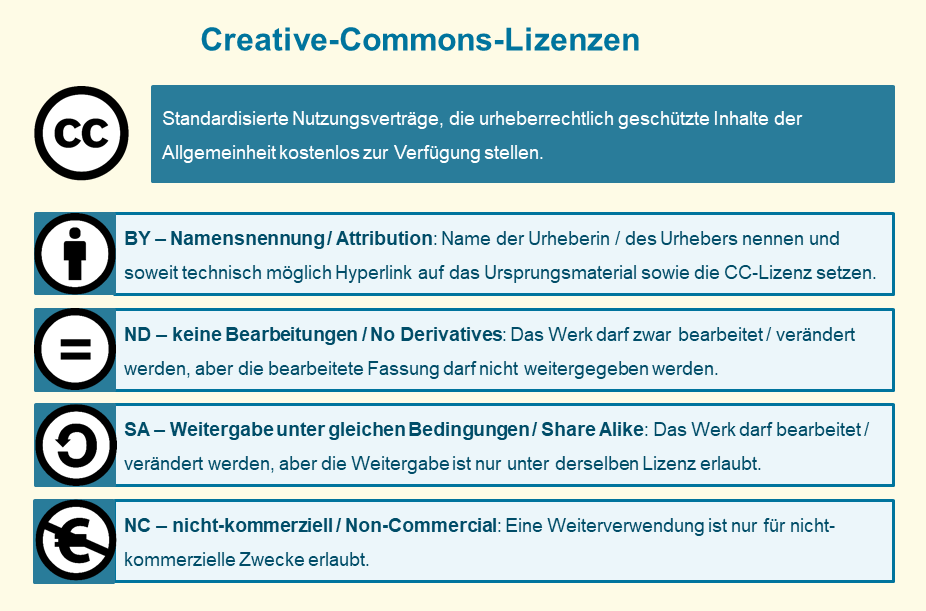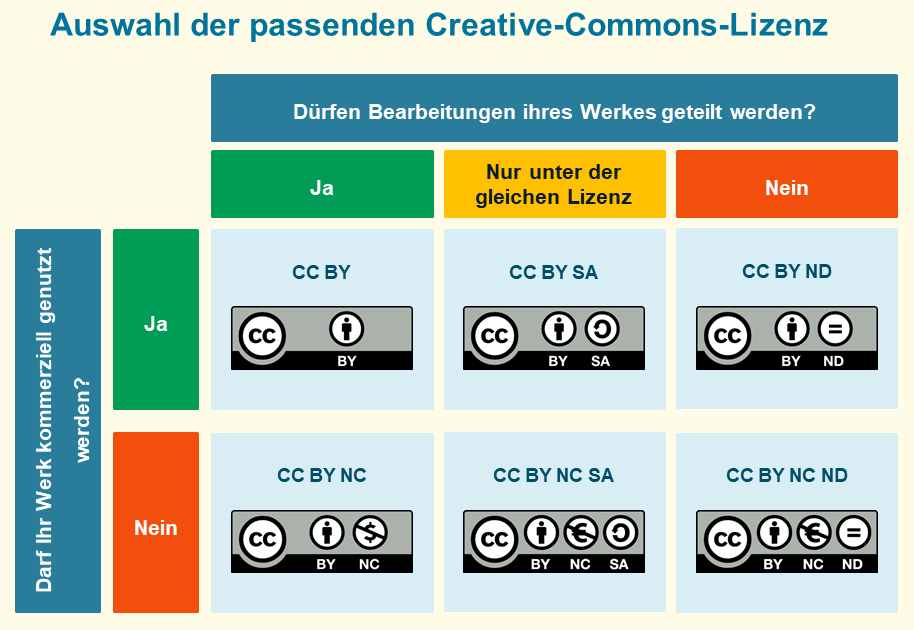As a teacher, you are free to decide how your teaching materials may be reused. If you decide to let a wider circle of persons use materials, you should publish them using a free licence. This allows you to define the conditions under which others may reuse your materials as open educational resources.
Because of their broad usage and simple language, creative commons licences are particularly suitable for this purpose. Creative commons uses a system of four basic “building block” licences to offer a combination of six different licences.

Image 1: Brettschneider / Braun: Creative commons “building block” licences / CC BY 4.0
How can you find the creative commons licence you need?
Start by asking two questions:
- Should others be allowed to edit your work before sharing it? This can allow other users, for example, to adjust your materials for new developments and findings.
- May your work be used commercially?
See image 2.
What happens if you publish course materials without licencing them?
As long as no rights were transferred to anyone else (e.g. a publisher), then all exploitation rights remain with the originator. In the case of course materials, these rights belong to the teacher him/herself. These works can only be used within the legal limitations (e.g. right to citation) or with the consent of the originator.
What should you do if you want to publish course materials containing content created by others?
Often your course materials will contain content that others have the copyrights for (e.g. images, graphics, text excerpts). This does not necessary prohibit you from publishing the material under a free licence; all the more so, you can publish it in four different cases:
- This material falls under the public domain. Inhalte.
- Usage is permitted by the right to citation. § 60 UrhG does not apply, since the materials are being used for a specific course.
- The material was published under a free licence. Important: Some licences only permit you to reuse material under the same licence (e.g. CC BY SA). You need to check the licencing conditions!
- You have the consent of the copyright holder.

Image 2: Brettschneider / Braun: Selecting a suitable creative commons licence / CC BY 4.0
